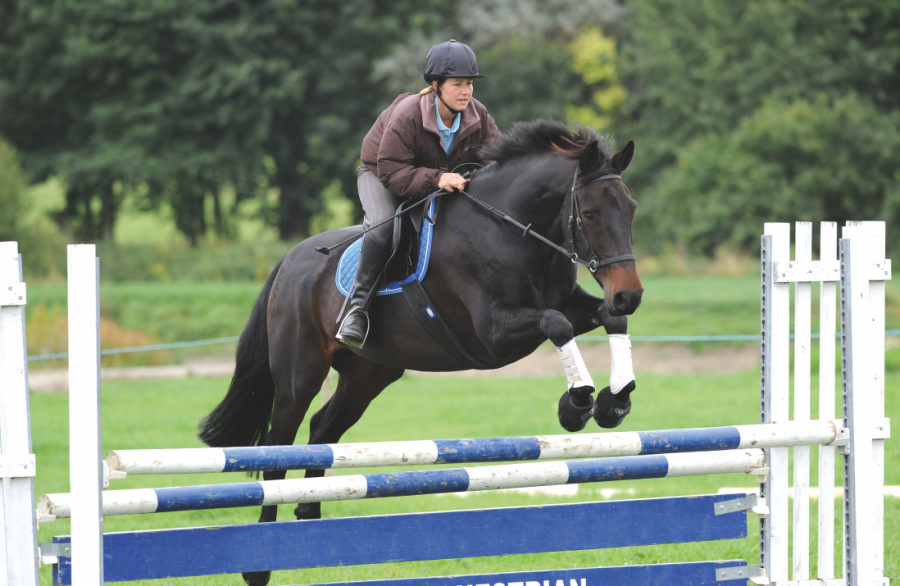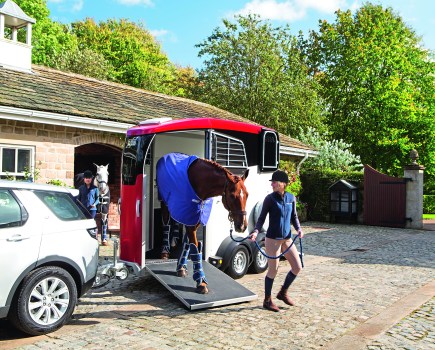Have you ever ridden a horse in a bitless bridle and would you consider doing so if you don’t already? Few things cause more division and controversy than the subject of riding in a bitless bridle, but there are numerous benefits and physiological advantages to doing so.
We only need to look at the natural horse to find out why this item of horse tack is so beneficial. When there is an obstruction in the oral cavity (mouth), it can cause a multitude of physiological disadvantages that hinder the horse.
Two significant examples are movement and breathing: key roles in any equine performer, regardless of breed or discipline.
A horse can only breathe through their nose. When the seal of the mouth is broken, this causes the soft palate to displace and obstruct the airways, hindering the horse’s ability to intake air. This is made even more difficult during vigorous exercise.
The combination of any present tension and restriction in the horse’s jaw indirectly affects the movement from the shoulders and forelimbs through to the hindlimbs.
This results in compromised movement, striding and balance. Removal of obstructions from the mouth allows your horse to perform to his optimum athletic ability, with increased stride length, balance and comfort.
This is where a bitless bridle comes in.
Facial nerves and bridle fit
When you consider any type of bridle, bitless or bitted, it’s essential to consider the facial structure of the horse.
When selecting a bitless bridle specifically, it is important to assess whether the type of bridle used is suitable for your horse given the various contact points these bridles have on the face.
No one type of bridle will be suited to each and every horse — a mistake so often made. One horse may be more comfortable with contact applied to a certain area of the face than others, be this by preference or for medical reasons.
There are a few key areas that need close consideration, with specific reference to the intricate network of cranial nerves.
As part of the peripheral nervous system, the cranial nerves stem directly from the brain and come in 12 pairs, with one of each on both sides of the head (see diagram below).
Every nerve has its own multitude of nerve branches. These play a vital role in sensory and motor functions, including balance, sensory (touch, taste, smell, vision) exchange, tongue movement and vocalisation.
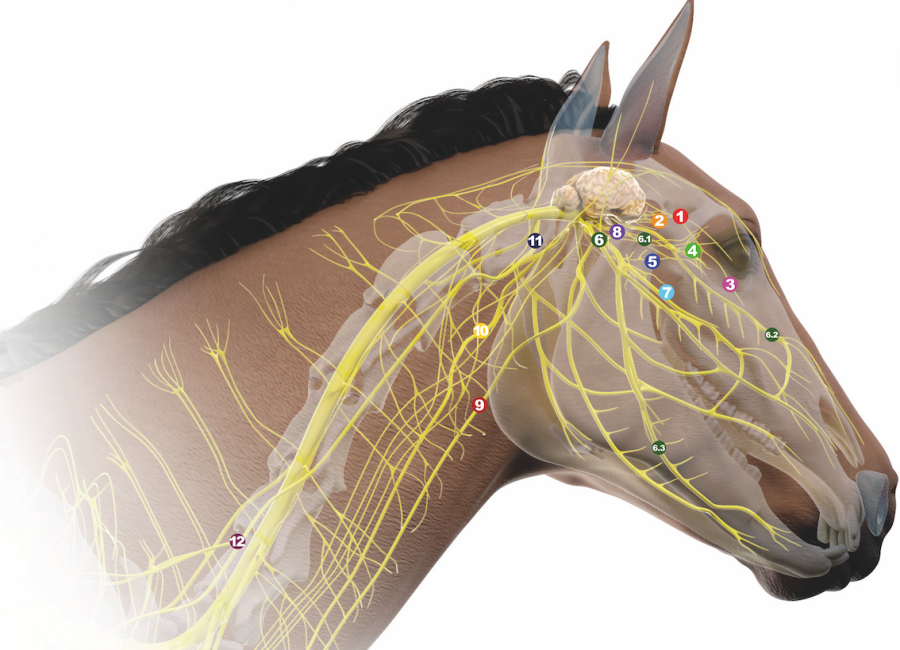
Fitting a bitless bridle
One of the key nerves that play a role in bitless bridle fit is the trigeminal nerve, which divides into three superficial branches: the ophthalmic, maxillary and mandibular.
These exit the skull cavity through holes known as foramen. This, alongside the facial and hypoglossal nerves, is a main nerve to be affected by poor fit, due to the branches’ close proximity to the skin’s surface.
Though we are not able to avoid each and every nerve, we can be mindful of bridle (bitless or otherwise) placement for enhanced comfort.
For example, ensuring the headpiece has sufficient ear clearance, the cheekpieces sit above or below — rather than on — the facial crest, and any noseband sits above the beginning of the soft cartilage tissue, but two to three fingers below the facial crest.
There should be two fingers clearance between the band and bone for an ergonomic fit.
Where are the brakes?
People often ask me about brakes when using a bitless bridle, but it is a misconception that brakes are related to a bit. If you had a bolting horse and a bit made of barb wire, it still would not stop them.
Why? Because horses naturally push into pressure and pain. Stimuli placed within the mouth commonly causes discomfort, exacerbating the horse’s natural flight response.
The removal of such a stimulus via a bitless bridle will free up the lines of communication so that your horse can respond comfortably to your cues, from your seat to hand. It is correct training that is required, pure and simple.
Every horse can transition
I believe every horse is able to transition to a bitless bridle, but many people disagree with me. I think the bigger question is whether every rider can transition to riding bitless.
The way in which the equestrian world continues to train horses is steeped in tradition, yet isn’t the point of tradition to add something good for future generations to come?
Much of what we are conditioned to believe about horses is false. Control is an illusion — it is communication we should seek. The world of the bitless bridle may seem foreign, but it is a language you will never want to forget once you learn it.
Types of bitless bridle
There is a good selection of bitless bridles available on the market. Below is a list explaining what the different types are and how each of them works:
Bosal Hackamore
This traditional Western bridle was brought to America in the 1700s by the Spanish Vaqueros. The bosal hackamore consists of the bosal nosepiece, hanger and 22’ mecate reins, traditionally made from horsehair.
A bosal is made from rawhide (this is the inner layer of cattle hides) braided around a rawhide core. Used as a signal device, it applies contact on the nose, chin and jaw.
Natural Hackamore
A natural hackamore is a combination of a high-quality braided rope halter and mecate reins wrapped around the fiador knot of the halter.
On this type of bitless bridle, the mecate reins (these are usually made from horsehair) allow you to adjust the length of rein to that which is most suitable for your horse, before finishing the wrap to give a ground line that is tied to the saddle when riding.
Sidepull
Defined by two rings on either side of the noseband to which the reins attach, the sidepull is one of the clearest and gentlest forms of bitless bridle around.
Working on direct rein aids, the contact points are clearly presented on the sides of the noseband when individually applied, and on the nose when both reins are applied, with no leverage.
Crossunder
Most commonly referred to as the Dr Cook, the crossunder bridle distributes pressure over a larger surface area on the opposite side to which the rein is applied (ie the indirect rein).
Creating an ‘x’ under the horse’s chin, it makes contact points under the horse’s jaw, across the cheek and up to the poll with a single rein, including downward contact on the nose when both reins are applied.

Scrawbrig
This is a noseband with a ring on each side, with a strap that loops under the chin through the two rings. The reins attach to two further rings, one on each end of the strap.
When the rein is applied, the curb strap applies pressure primarily in the chin groove, but also downwards on the horse’s nose. This means that this type of bitless bridle creates a constricting effect.
Jaquima
A Jaquima is usually known as the Paso Fino bridle, because it is a bitless bridle used traditionally for the Paso Fino breed of Spanish-gaited horse.
The Jaquima is a dual bridle that can be used with single or double reins. Each bridle has a side-pull option, with two separate rings located underneath on the curb strap to form a curb-ring hackamore.
Dual bitless bridles
The dual variety of bitless bridle provides the option of using either a single or double rein depending on preference and exercise. Dual bridles are available in a variety of designs, most commonly featuring a side-pull and curb combination.
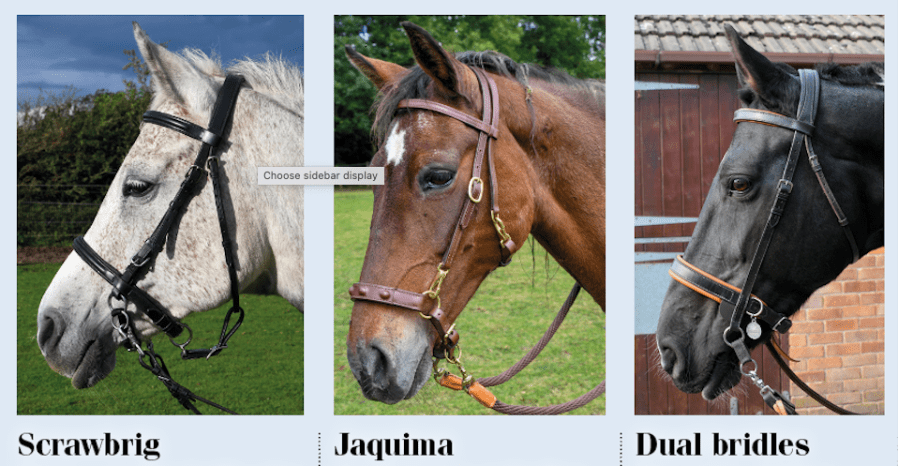
Multi bridles and attachments
Some bitless bridles feature multiple options. Multi bridles have three or more interchangeable settings that often come with various attachments and accessories. Noseband attachments are available to add to existing bridles to convert as opposed to purchasing a full bridle.
Mechanical Hackamore
A mechanical hackamore is defined by shanks in varying lengths and designs, acting via leverage with the contact points on the horse’s face, primarily the nose, chin groove and poll.
The amount of leverage varies according to the length and shape of shank. The smaller the shank, the less leverage.
Some have adjustable settings, offering variation in method of communication.
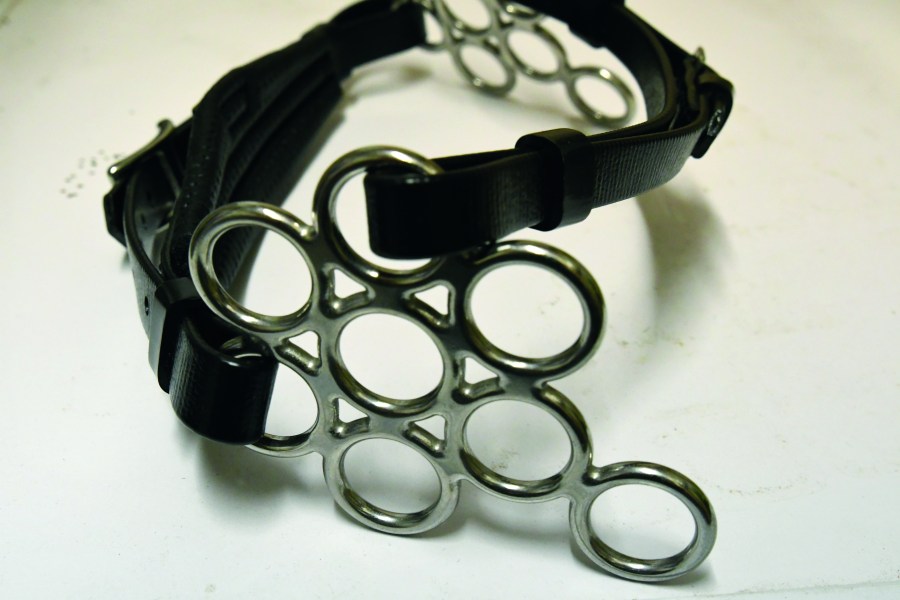
Tips for riding in a bitless bridle
- Good communication begins on the ground. Ensure your horse is relaxed and focused, using a foundation of dynamic groundwork exercises.
- Choose a correctly fitting bitless bridle based on your horse’s facial conformation and responses to the points of contact of the bridle.
- Check your horse’s responses by training soft rein responses from the ground, both while stationary and in motion, with soft lateral flexions on both sides, half-halts and rein-back.
- When your horse’s responses are soft and clear, practise the same rein exercises in the saddle, beginning with simple transitions in a comfortable space, before progressing further.
- When riding in a bitless bridle, a constant conversation with the horse in which the contact is understood and meaningful is vital.
- Feel the horse’s movement for a fluid rapport to eliminate holding, which causes bracing.
- Removal of the bit frees up lines of communication between you and your horse. So if you change to a bitless bridle, you find find that they start to express underlying areas of training that need attention.
Benefits of bitless bridles
The following are some of the many reasons why choosing a bitless bridle can be so beneficial:
- A more forward going horse with greater freedom of movement.
- Improved jumping technique thanks to increased freedom of movement in the horse’s head and neck.
- A happier and more willing horse.
- Better communication between horse and rider.
- Improved contact and connection.
- Teaches the rider to ride from their seat and legs, making you less reliant on controlling your horse from your reins.
Shop for a bitless bridle
Twin Oaks Trekking Bridle Nevada
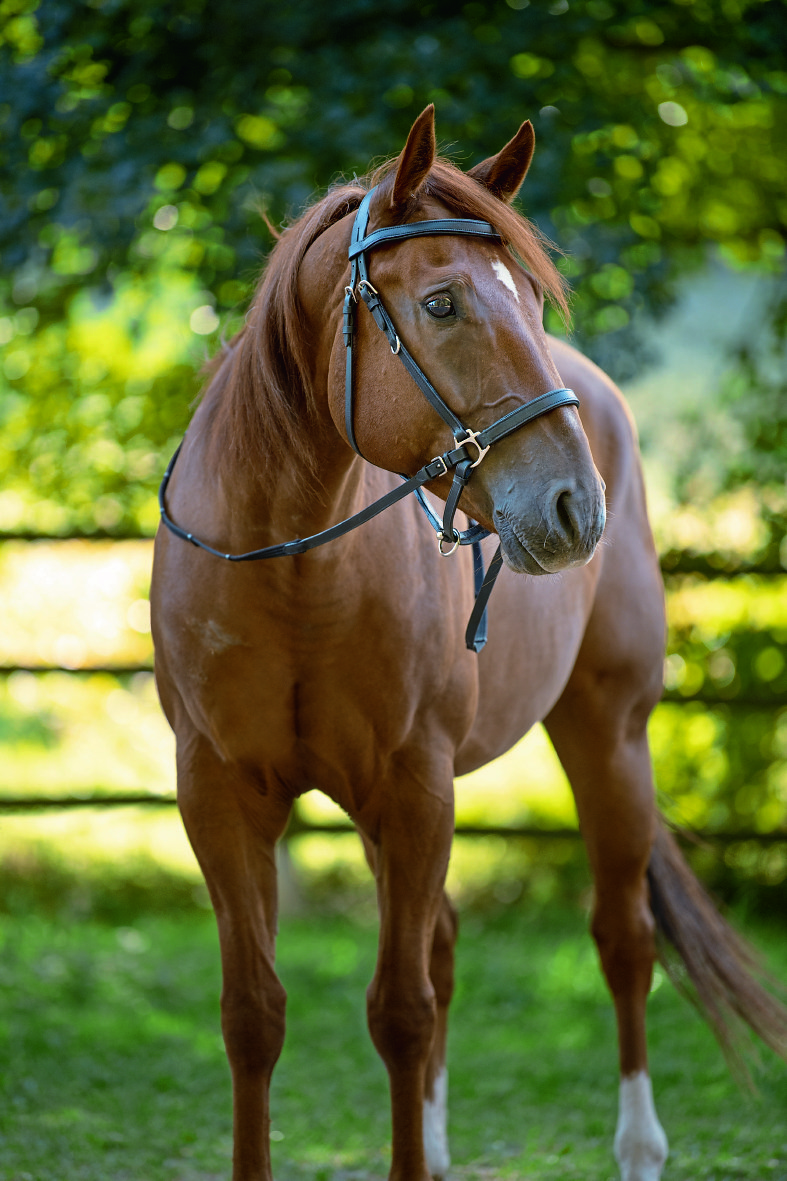
This is the ideal combination of headcollar and bridle. Made from leather, the Trekking bitless bridle features an anatomically-shaped headpiece for horse comfort.
The ring on the chinstrap can be used for leading. The noseband and browband feature soft padding. The Nevada also comes with a pair of web reins.
Colour: Black. Sizes: Cob or full
RRP £69.90
Rambo Micklem Multi Bridle
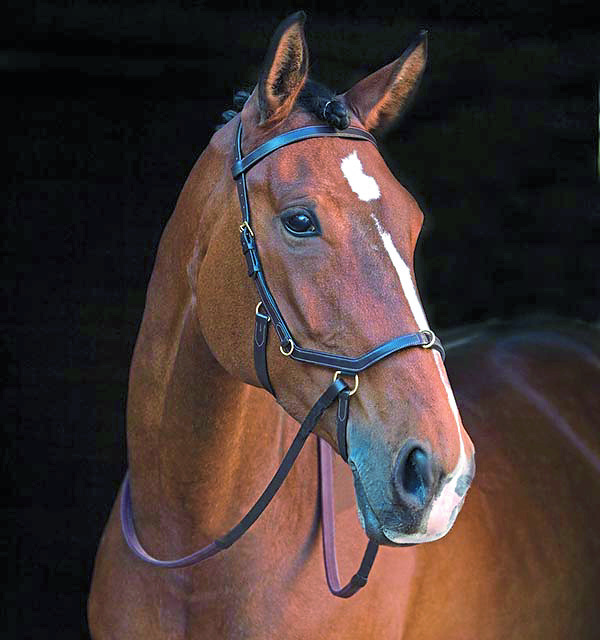
This leather bridle is designed to comfortably fit the shape of your horse’s skull, avoiding pressure on sensitive areas. It can be used as a bridle (with a bit), lunge cavesson, or as a bitless bridle with three strength options. It comes with tongue protection clips, bit straps, curb groove strap and a strong bitless strap.
RRP £143.95 (including 10% off!)
QHP Sunna Bitless Bridle
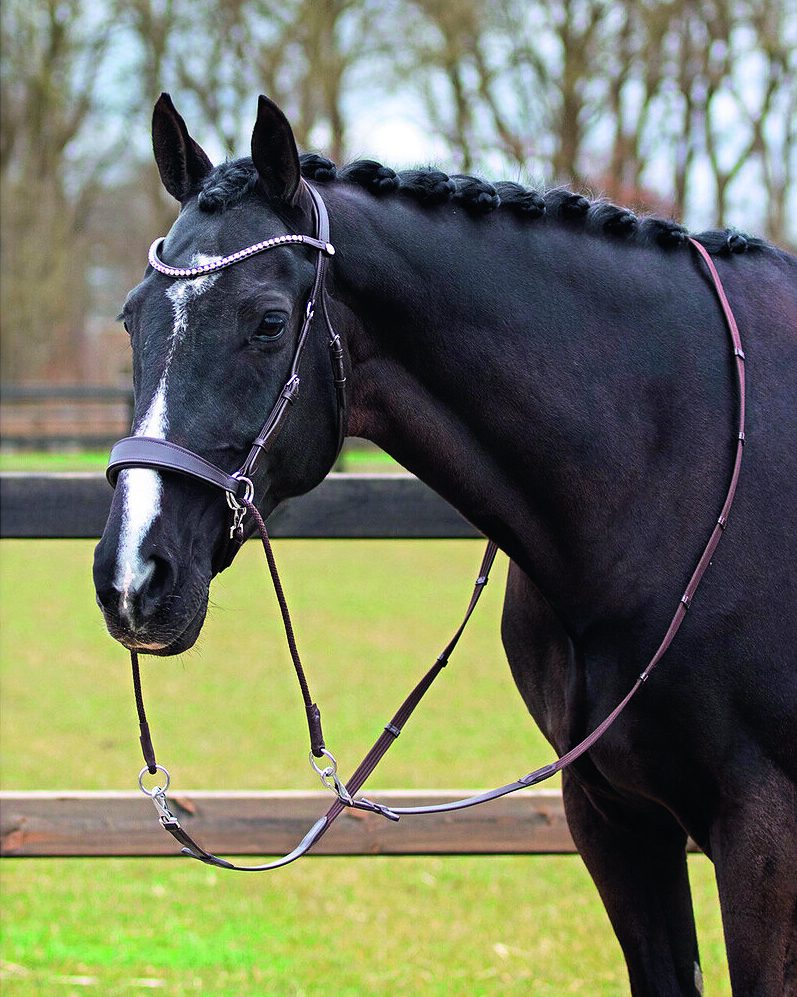
This multifunctional bitless bridle can be used as a side pull, chin crossed and jaw crossed bridle — a great option if you’re not sure what style of bitless bridle to plump for.
The anatomically shaped headpiece ensures the best possible comfort, while the browband is decorated with rhinestones with a multicoloured sparkle.
Colour: Black or brown. Sizes: Pony, cob, full
RRP £82 (US$91.33)
Buying in the USA? Purchase here
Easy Trek Anatomical Bitless Bridle
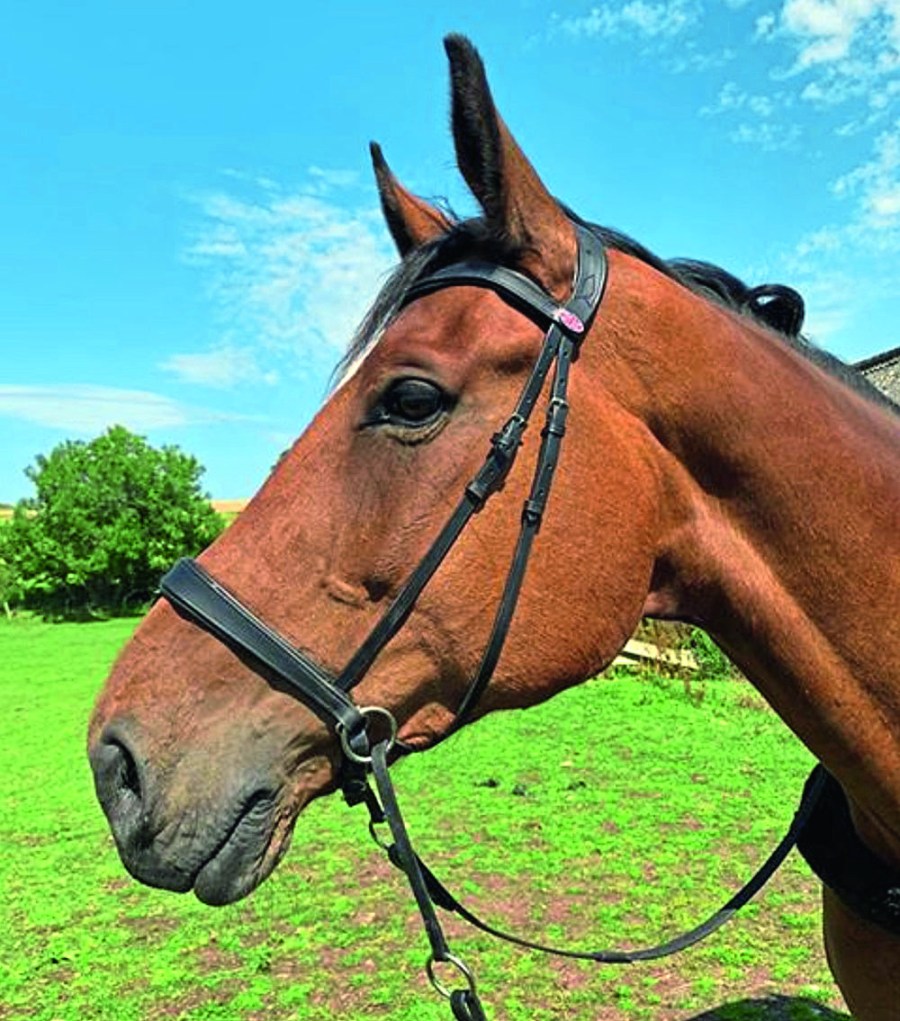
A leather cross under bitless bridle with a soft padded brow and noseband for extra comfort. The ergonomic headpiece is shaped for a good fit and has extra padding to minimise poll pressure. Included with this bridle is a pair of rubber sure grip reins.
Colour: Black, brown. Sizes: Pony, cob, full, draft
Practical Horse Company Bitless Bridle
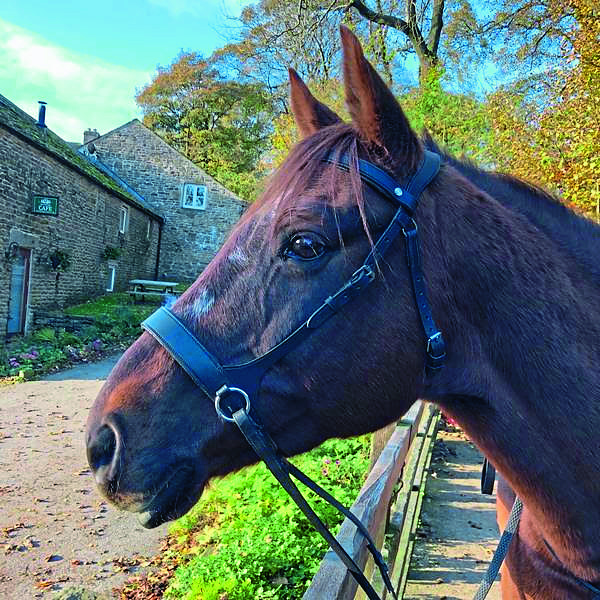
This bitless bridle is shaped to fit your horse’s head and avoid major facial nerves. The thick padded noseband helps to distribute pressure when using the aids and the all-in-one headpiece helps to reduce bulk and increase comfort when ridden.
The Practical Horse Bitless Bridle is a side-pull style. There is also an extra strap that attaches from the throat lash to the noseband so that the bridle can be used as a headcollar.
Colour: Black or brown. Sizes: Pony, small cob, cob, full, X-full
RRP £43
Transcend Bitless Bridle
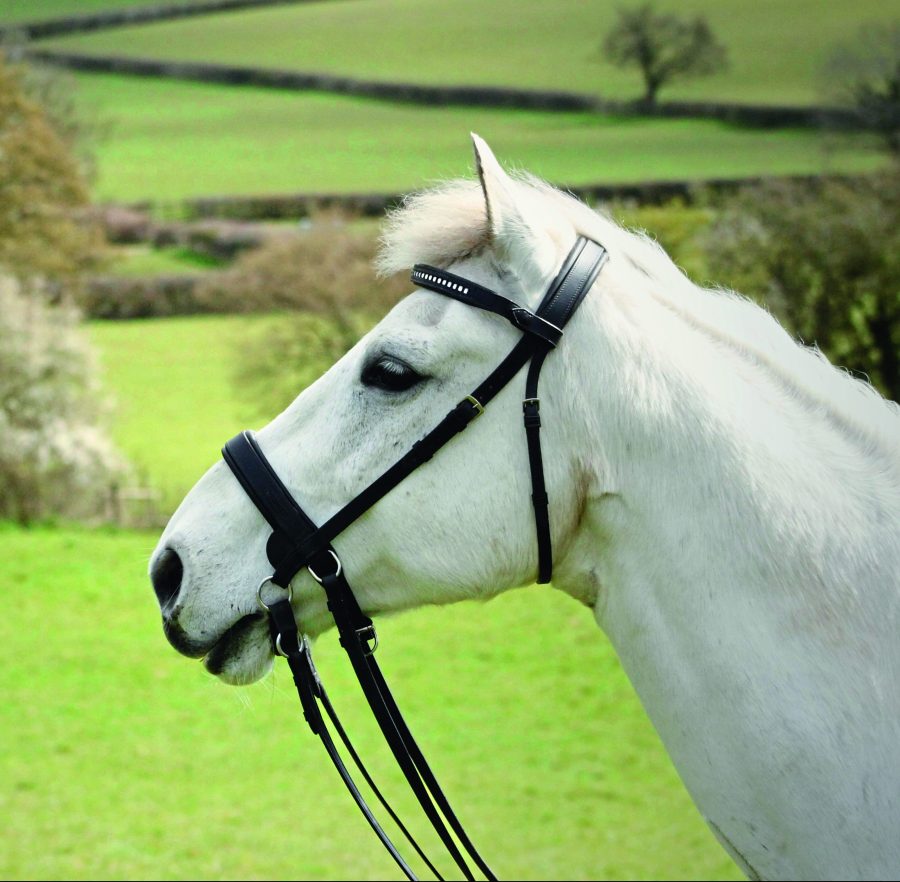
Transcend is a soft bitless bridle made from English leather. The action of the bridle creates a subtle, soft communication between you and your horse. It is designed to avoid the sensitive nerve bundles on your horse’s head for increased comfort. The Transcend noseband is wide and softly padded, and it is fitted below the facial crest and the nerve bundle exit point.
Colour: Black or Havana with various coloured stitching decorations. Sizes: Pony, cob, full, X-full
RRP from £160
Main image © Your Horse Library/Kelsey Media Ltd. Diagram © Ross Cooper/Rosca Horsesmanship

